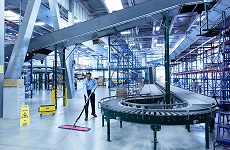
For manufacturing companies quality is somewhat double-edged sword. On one hand they would like to provide the best product possible to their customers, however doing so increases their cost. If they try to “cut corners” and deliver product that does not quite stand up to the scrutiny of demanding customers they can reduce their initial cost, however they stand to lose customers in the long run by doing so. What are the manufacturers supposed to do? My view is higher cost of improved quality is well worth the benefits you can received in the long-term. Let me explain how.
Manufacturers need to look at the tradeoff between cost and benefit of quality from the long-term and comprehensive perspective. Sure, aiming for higher quality will add to the cost in the short-term. You can even lose some money in the beginning. But you need to broaden the horizon and consider all other aspects of the business and understand how improved quality helps improve your business.
- Improved customer satisfaction – Higher customer satisfaction is one of the most important benefits of manufacturing and selling high quality products. How many times have you bought a product that breaks down quickly? Would you go back to the same manufacturer for that product? Of course not! Your customer satisfaction will remain high with higher quality which will lead to repeat customers, and even more customers when those satisfied customers will recommend your business to their colleagues.
- Higher price – Manufacturers are able to command higher price for their products if they can maintain the quality of their product. As I mentioned in earlier section. High quality product will lead to higher customer satisfaction and those highly satisfied customers will be willing to pay extra to have peace of mind. In many cases, you can more than make up the higher cost of quality by commanding higher price for your products.
- Reduced rework cost – Another important benefit of high quality is reduction in manufacturing cost by not having to rework the defective parts. If you can manufacture the high quality parts, for example stainless process piping, from the beginning it will lead to better products and you will not have to go back to repairing the parts that are defective. It is even more expensive to repair those parts if you fail to find the defect in your manufacturing plant and if they are sent back by customers. You will end up paying for the shipping cost as well in this case.
- Reduced wastage – Focusing on high quality from the beginning will help you reduce the wastage of parts and raw material. `Many manufacturers end up throwing away defective parts because they are not repairable. This ultimately leads to higher overall cost including manufacturing and raw material. Eliminating this waste and overhead will lead to higher profit.
As you can see when it comes to quality it is not quite black and white. You can benefit in the long-term by incurring little bit of higher cost.






